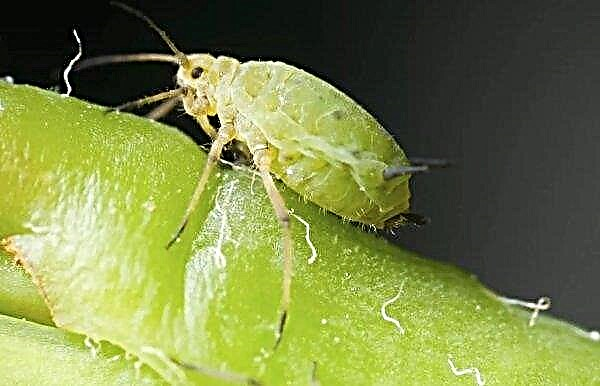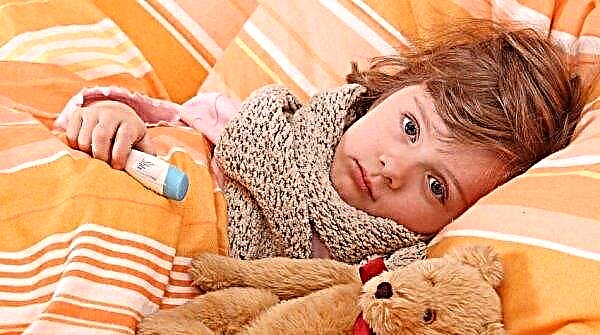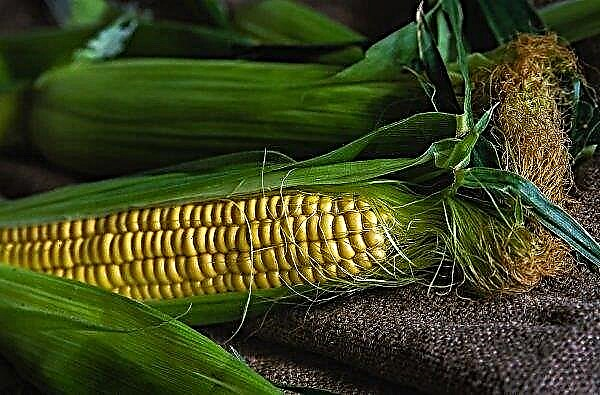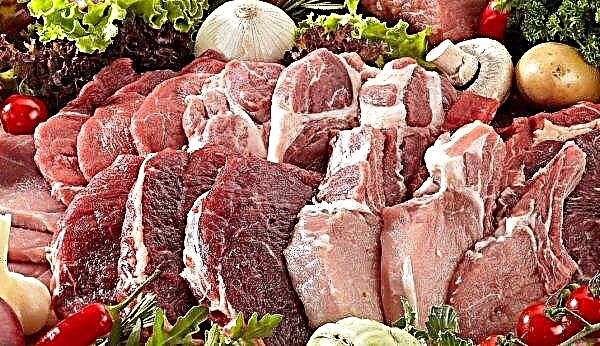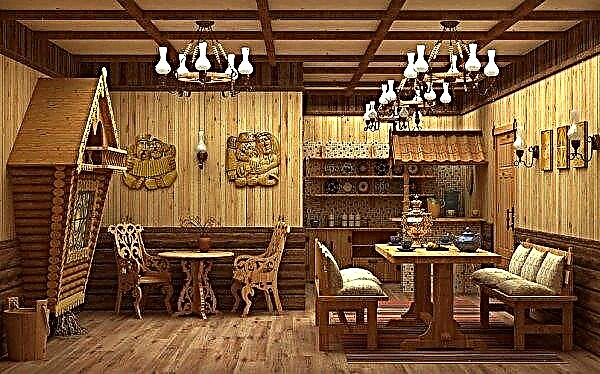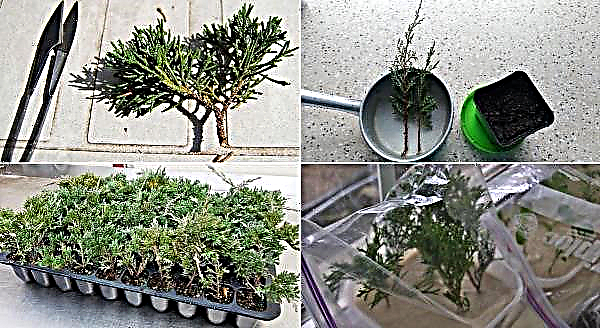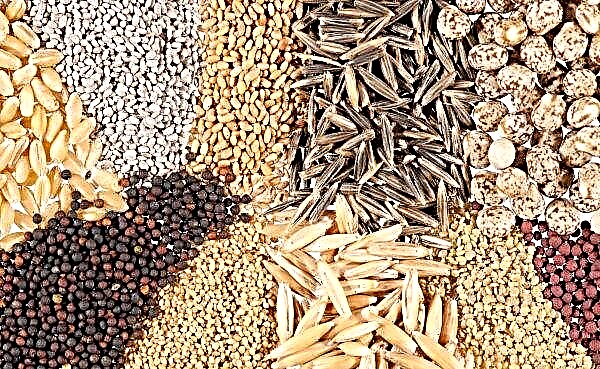With the advent of new modern materials for covering greenhouses and hotbeds, familiar film is a thing of the past. Experienced farmers have already appreciated the cover of polycarbonate greenhouses, which has excellent thermal insulation, light transmission, resistance to both high and low temperatures.
The advantages of polycarbonate are more than enough to give preference to it when choosing a material for coating greenhouse frames. Compared to the film, it is quite expensive, so many gardeners are wondering if it is possible to save money by installing polycarbonate in a greenhouse on their own.
Technology for installing polycarbonate in a greenhouse: how to
If a decision is made without installing the help of a specialist to install polycarbonate in a greenhouse or a greenhouse, first of all, it is necessary to study each stage of the process and take into account all the features of the material used.
Installation consists of the following steps:
- Placing sheets around the perimeter of the structure and marking the attachment points.
- Drilling holes for thermowells and screws taking into account the minimum distance from the edge (40 mm) and the diameter of the holes, which should be several millimeters larger than the diameter of the washer.
- Chip removal after cutting.
- Fastening at the ends of sealed tapes.
- Determining the correct side of the installation - the protective layer should be on the outside.
- Laying canvases with a small tolerance for expansion to exclude its deformation.
- Bonding sheets using thermal washers using gaskets.
Video: Installation and mounting of polycarbonate in the greenhouse
Depending on the design of the greenhouse, various profiles are used:
- for connecting blocks at right angles - angular;
- for connection on the wall - wall;
- for the ridge on the roof - ridge.
One of the most crucial moments in preparing for the coating is the choice of material.
The choice of material for the canopy
The material for the canopy depends directly on the design of the greenhouse. The most commonly used glass, film and polycarbonate, which have both their advantages and disadvantages. Modern greenhouses are increasingly being covered with polycarbonate.
In his favor, such properties testify:
- relatively low cost;
- good light transmission;
- resistance to wear;
- low weight of polycarbonate structures;
- low thermal conductivity;
- resistance to chemical reagents;
- high strength;
- easy to process (cut, drill);
- wide color gamut.

A wide range of polycarbonate is available on the market, and the choice of the best option sometimes becomes a real problem.
In order to avoid difficulties during the assembly of the structure, and the canopy lasts a long time, it is necessary to pay attention to certain criteria when choosing a material:
- The highest quality products are offered by European and Israeli manufacturers. With a limited estimate, polycarbonate produced in Russia can also be purchased. But it is better to refuse Chinese sheets.
- The product must have a quality certificate, which is a guarantee that the seller is responsible for the product being sold.
- Material must be labeled by the manufacturer. The marking should contain comprehensive information: manufacturer details, release date, dimensions, etc.
- Quality material should have a uniform color, without color transitions. The absence of cloudy areas, cracks, kinks, bubbles, scratches is a sign of a quality product.
- UV protective film must be intact.
- Stiffeners should be parallel to each other, without undulations.
- The packaging must not be deformed or have any damage. All edges of the sheets should be closed (except for the bottom, designed to remove condensate).
- The thickness of the sheets depends on the season for which the greenhouse is supposed to be used. For structures that will be involved in the spring-autumn season, it is enough to use a thickness of up to 10 mm. For heated greenhouses and hotbeds, it should be 15 mm or more.

On the market you can find several varieties of polycarbonate designed to cover greenhouses, each of which has its own advantages and disadvantages.
Varieties, features
Two types of polycarbonate are used for coating.
Monolithic polycarbonate is more like glass, but it is a hundred times stronger and has better light transmission. Sheets are produced with a thickness of 0.75 ... 40 mm.
- The main advantages of this type of material are:
- high degree of strength (used in booking, transport glazing);
- light transmission reaches 89% (higher than that of any plastics);
- low flammability and self-extinguishing ability;
- lightness (4.8 kg / m 2);
- high rates of heat and sound insulation;
- safety in operation (at destruction does not leave sharp fragments);
- versatility in processing (easy to drill, cold and hot forming, thermal vacuum forming).
 The industry produces this kind of material in the form of standard sheets of 2.05 x 3.05 m in various colors.
The industry produces this kind of material in the form of standard sheets of 2.05 x 3.05 m in various colors.Did you know? The properties of polycarbonate are widely used in aircraft construction, where qualities such as high strength with a minimum mass of material are especially important.
- Cellular, which has a cellular structure, is often used to create canopies and cover greenhouses and hotbeds, thanks to qualities such as:
- high bearing capacity;
- ease of installation;
- long term of operation;
- UV protection;
- strength;
- resistance to moisture;
- easily bends;
- resistant to chemicals;
- excellent thermal insulation;
- well protects plants from direct sunlight, scattering them.

Focusing on farmers as a separate niche, manufacturers offer polycarbonate with a special coating that does not allow water to linger on its inner surface, thereby ensuring good light transmission.
The correct cutting of polycarbonate in the greenhouse
Cutting out the material for covering the greenhouse is a rather crucial stage in its design, and it is better to entrust this process to specialists.
But you can do it yourself, subject to certain rules and cutting technology:
- It is necessary to cut the material according to the cutting pattern to minimize waste.
- During the cutting process, the protective film must remain holistic.
- Cutting should be done exclusively along the voids.
- Sawdust from sheets should be removed with compressed air.
- Begin cutting with a canopy, then cut the doors, windows. Finish by cutting the material onto the walls.
- The ends should be carefully closed with sealant.

Polycarbonate is a fairly malleable material. To work with it, you will need a saw (you can use a circular saw) and a hacksaw on a tree.
Styling features
When covering the greenhouse, special attention should be paid to the side of the mount, since the protective film on the sheets is provided only on one side, and the mounting distance.
Which side to attach
Before attaching, you should determine the external side that will protect the plants from UV rays. It is not always possible to independently recognize the side with the protective film on its own.
Some tips to help avoid mistakes:
- the protective film is usually painted, and the inner surface of the sheet is transparent;
- carefully read the instructions. Often there the manufacturer indicates how the side with the protective surface is indicated;
- You can contact the seller or specialist for help.

More reliable, although it will cost a little more, polycarbonate with a double-sided coating of a protective film. Such material will last longer, therefore, if the budget allows, experts recommend purchasing this type of material.
How far
The distance between the supports is an important condition for the reliability of the greenhouse and is consistent with the dimensions of the panels. Manufacturers produce cellular plastic with a standard width of 2.1 m. Given that the stiffeners are located along the panels, their edges should lie on the supporting structures along the long side.
In this way, supports should be installed at a distance of 1.05 m or 0.7 m. The panels can be fastened together to the longitudinal parts of the structure using special connecting profiles.
Work with cellular polycarbonate
When designing cellular polycarbonate coatings, the following should be considered:
- Sheet sizes (cutting layout should be optimal to reduce material consumption).
- Climatic conditions (wind strength, snow cover thickness).
- Material expansion when heated.
- Minimum bending radii of sheets (if an arch coating is being designed).
- Possible compression or expansion of panels under the influence of high temperatures.
- The necessary set of mounting elements.

Given the variety of designs of greenhouses and greenhouses, an individual approach to the cutting and installation of the structure is necessary.
Can honeycomb polycarbonate sheets be bent
Cellular polycarbonate has been successfully used in the design of arched structures of greenhouses due to its ability to bend easily. Bending does not require additional operations (e.g. heating). It is enough to fix the sheet with a vise, giving it the required radius.
When creating a bend, the location of the honeycombs is taken into account: it is possible to bend exclusively along, that is, only in their direction.Important! When creating a bend, you must take into account the minimum allowable radius, which can be clarified with the seller. For each type of panel, it has different meanings.
Features of cutting and preparation for installation
Before cutting sheets prepare a drawing with accurate measurements. This takes into account the location relative to the ribs.
The process consists of the following steps:
- Cutting. A circular saw with small undiluted teeth will do the job best. It is better to use carbide wheels. In order to avoid injury or poor-quality cut, do not hold polycarbonate sheets with your hands when cutting. It is recommended to securely fix the sheets on a solid surface, it is better to use a vice for this purpose. Shavings from the cuts should be removed using compressed air.

- Making holes. The holes in the panels are drilled between the ribs so that the fastening elements do not interfere with the drainage of condensate. For drilling, it is recommended to use an electric drill with drills for metal.

- Sealing. The upper ends of the honeycomb panels must be sealed with self-adhesive tape. The lower ends are left open for condensate to exit.

Next, you can begin to mount the prepared sheets.
Mounting Methods
The installation process consists in properly securing the polycarbonate. Most often, specialists use thermowells and profiles for this purpose.
Thermal washers
Manufacturers for airtight fasteners offer a variety of thermowells made of:
- polycarbonate;
- polypropylene;
- metal.

Regardless of the material, all thermal washers have polymer gaskets that provide a tight seal.
Polycarbonate Thermowells are considered the most durable and practical. They are quite aesthetic and are produced in a wide range of colors. With their help they attach cellular polycarbonate. The size of the thermal washer should correspond to the thickness of the half carbonate. Properly selected fasteners allow you to tighten the self-tapping screw to the stop without compressing the material.
During installation, a hole is pre-planned and drilled in the material, which exceeds the diameter of the leg by 2 ... 3 mm in diameter. The optimal step is considered to be 35 ... 50 cm, the minimum spacing from the edge is 4 cm. Insert the thermal washer into the hole, center the seal and tighten.Did you know? The first hotbeds appeared in ancient Rome, where plants were planted in small carts, which were rolled out into the street during the day, and left in the heated rooms at night.

Polypropylene Thermowashers they have a long service life (4 ... 5 years), they can sufficiently seal the joint due to their shape. Metal thermowells are the most durable and do not corrode. The tightness is ensured by the rubber or polyurethane gaskets included in the kit. Most often, this type of washer is used when fastening aluminum connecting profiles.
Profile
For fixing polycarbonate, various types of metal profiles are used:
- UP - end;
- HCP - detachable, connecting, integral;
- HP - one-piece;
- K - ridge;
- F - wall;
- Y - angular.

Arched greenhouses are mounted using end, one-piece and connecting. To assemble other designs, you can use any of the listed profiles.
Important! If, when covering an arch-type greenhouse, both ends of a polycarbonate sheet are at the bottom, it is necessary to cover all edges with a profile tape.
Sealed tape
Sealing tapes are made of two types of aluminum: solid and perforated. One-piece allows you to completely seal the internal cavity of the polycarbonate, gluing with it the upper sections of the sheets.

To protect the internal cavities from insects, dust and dirt, perforated airtight tapes are used, sticking them to the lower cut of the sheets.
Aluminum mounting systems
Aluminum profiles make it possible to assemble very durable structures using gaskets. During assembly, the aluminum strip is attached to the base, seals are placed on top of the grooves.
Polycarbonate sheets are laid on top, on which upper strips with rubber gaskets are mounted. Fasten with roofing screws. Fix the decorative cover over.
Can polycarbonate be mounted horizontally
Polycarbonate sheets are never placed horizontally. With this orientation, the possibility of removing condensate from the cavity of the sheets is excluded.
Rules for self-installation
In order to avoid difficulties during assembly, it is necessary to take into account all the nuances associated with each individual stage of the process.
What you need to know before starting installation
Despite the fact that polymer plastic is a fairly malleable material, there are features that should be considered before working with it:
- When laying on a curved surface, make sure that a crack does not appear on the sheet.
- Carbonate sheets having a small thickness, as a rule, have a protective layer over the entire thickness, so they can be laid on either side.
- Expensive polymer sheets are coated with a protective layer on one side only, which should be taken into account when installing them.
- If a tree is used as the frame for the greenhouse, the properties of swelling and the increase in size when moistened should be taken into account.
- Optimal for covering greenhouses is a sheet thickness of 4 mm or more, but in practice any material thickness can be used. Since the service life of the sheets does not depend on their thickness, and the price increases in direct proportion, it is better to save at the stage of selection of polycarbonate.
- The polymer sheets break the integrity under the influence of various solvents, such as methacryzole, tetrachloroethane, prinium, ethylene chloride.
- To reduce the force of pressing the material to the frame, they are used for clamping screws - gaskets, for self-tapping screws - seals made of rubber or polyurethane.
 Correctly select the fasteners, the type of which depends on the properties of the selected profile and directly the frame itself.
Correctly select the fasteners, the type of which depends on the properties of the selected profile and directly the frame itself.How and how to fix polycarbonate to metal
Polycarbonate can be attached to metal in two of the most common ways:
- Thermal washers (spot mount method). In this case, the holes are drilled 1.5 ... 2 mm larger than the diameter of the thermowasher so that the plastic washer having a short leg fits snugly into the hole and clicks into place. The sealing gum included in the kit prevents the ingress of dust and moisture, tightly fixes the material.
- Using metal profiles sheets are usually fastened when they need to be joined (when stacking in several rows). In this case, polycarbonate is first inserted into the profiles, after which the finished structure is installed in the right place. The dimensions of the profiles are selected depending on the thickness of the polycarbonate. The standard profile length for longitudinal elements is 6 m, for transverse - 2.1 m. The thickness is selected according to the thickness of the sheets.
End profiles designed to prevent dust and moisture from getting inside. The design provides ventilation, which allows you to remove condensate from the cavities of the panels. They are put on the end parts of the sheets after trimming and sealing tape stickers: on the upper edge - aluminum, on the lower - perforated. When designing arched greenhouses, a perforated tape is glued to both ends.

Connecting HP profiles are quite flexible, they are easy to bend when assembling arched structures. You do not need to trim them, their length corresponds to the standards of the sheets. The size must be selected depending on the thickness of the polycarbonate. If it exceeds 10 mm, it is better to use detachable profiles.
Detachable profiles quite expensive. They allow longitudinal fastening of sheets without damaging them and hide joints. Recommended when designing greenhouses and winter greenhouses from thick sheets of polycarbonate. Installation is carried out using self-tapping screws for metal through the lower bar, in which holes are drilled at a distance of 30 cm. The diameter is taken slightly larger than the diameter of the screws. Polycarbonate must be installed in place with a gap of 2 ... 2.5 mm, cover with the upper bar, which clicks into place.
Skate RP Profile used for the assembly of gable and arched greenhouses with a width exceeding 4 m. For such structures it is impossible to use polycarbonate of standard sizes. Sheets are fastened in grooves of a profile from two parties. In this case, 3 ... 5 mm clearance is provided inside the groove for expanding the material.
Angle FR Profile used for joining roof slopes. It allows tightness of adjacency of sheets at a right angle. Corner profiles are produced in standard sizes: length - 6 m, thickness - 6 ... 10 mm.
Wall FP profile Designed to provide thermal insulation of joints and prevent leakage of moisture between the roof slope and the wall. Available in 6 m long and 6 to 10 mm thick.
To the tree
For fastening polycarbonate sheets to the wooden frames of greenhouses and greenhouses, self-tapping screws of the following types are used:
- galvanized roofing with a hex head and a washer;
- with rubber thermowasher;
- with polymer thermowasher.

In addition to self-tapping screws, they use connecting profiles - both detachable and one-piece, with which the sheets are clamped.
Fastening with wood screws is done by screwing them into the material. Due to the fact that the tip is made in the form of a drill and has a small number of turns, the insertion process is not time-consuming.
Roofing self-tapping screws are the cheapest option and are convenient for working with a screwdriver thanks to the hexagonal head. The advantage of such self-tapping screws is the large diameter of the rod, as well as anti-corrosion properties, since they are made of galvanized. Self-tapping screws with thermowells are large in diameter and are often used to solve the problem of thermal clearance.
Having a lot of advantages, in comparison with the film, polycarbonate is quite expensive and difficult to install material. However, experienced farmers are increasingly abandoning the traditional coating of greenhouses, preferring this particular method. To reduce the final cost of the structure, you can do it yourself. But for this it is necessary to stock up with knowledge, patience and clearly adhere to all recommendations for the installation of polycarbonate sheets.



